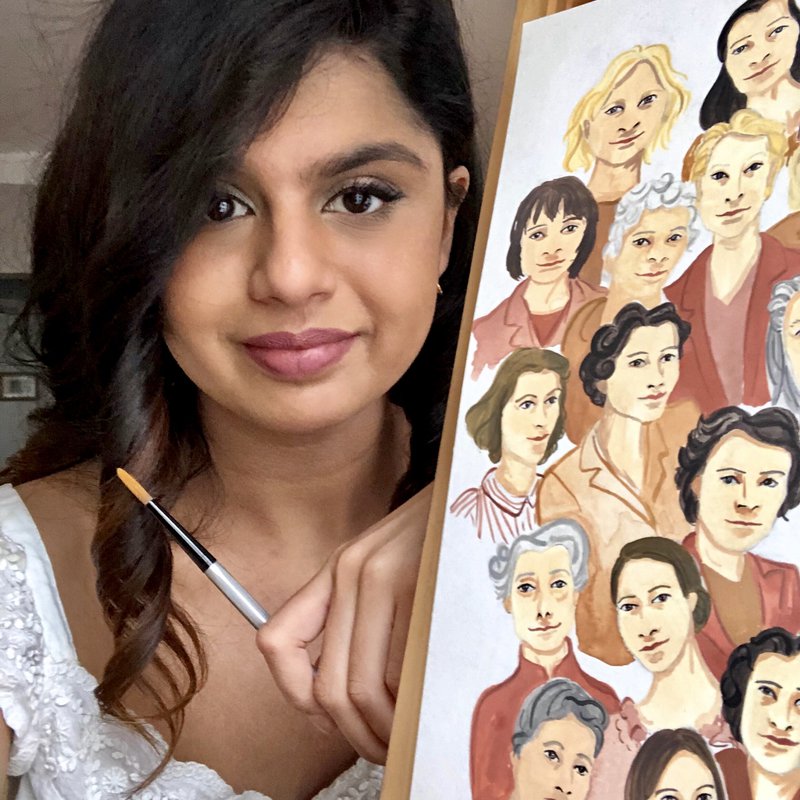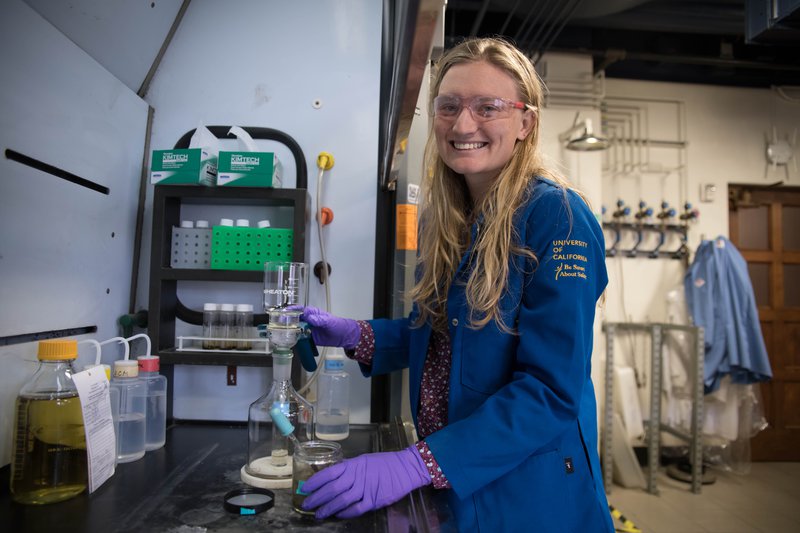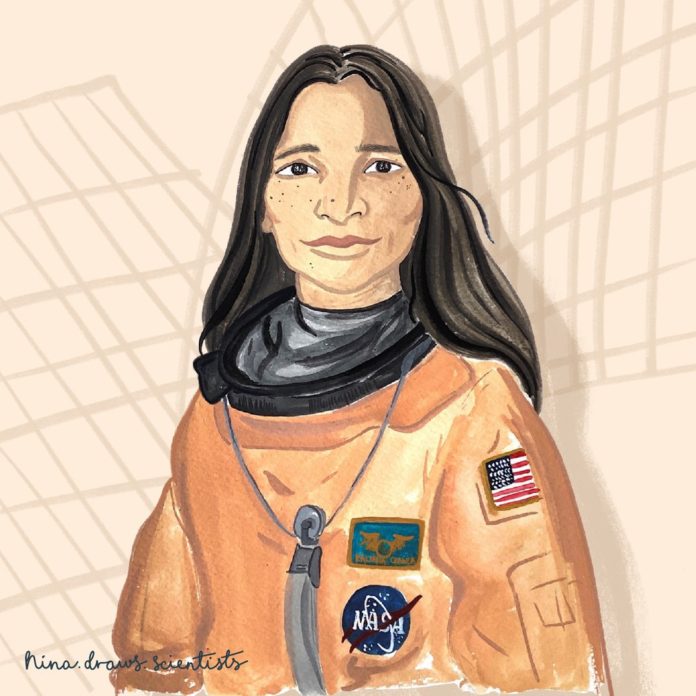Instagram accounts like ‘How 2 Rob a Bank’ want to teach us more about women in maths and science – yet they face harassment and deactivation.
They had tried to engage with the people leaving negative comments on their Instagram posts, but Bia Kazmi, a business and data analyst and co-founder of the Instagram page How 2 Rob a Bank, did not expect their profile would be deactivated after people had reported it.
Their crime? Being women who encourage people to use maths in their daily life.
Even within a seemingly neutral subject such as maths, gender bias can cause serious problems to women trying to make a difference, it turns out.
Kazmi says they founded the page simply to encourage people to use maths in an everyday way. “We don’t post many things that suggest we are women, and a lot of our followers just assume we are men – unless they really look for excerpts from our podcast, where you can hear our voices.”
Kazmi and her friend Zoey Luu chose the name How 2 Rob a Bank because they wanted a fun title to let people know that maths can be fun too, and isn’t just about trigonometry and algebra.
After they posted the solution to a particularly difficult mathematical conundrum, the Two-Envelope Problem, they encountered a problem of their own.

“The problem is very controversial, and quite difficult to understand, even if you have a maths background,” Kazmi explains. A man started a discussion online, claiming they had it wrong and were spreading false information. “We tried to engage with him, arguing that there was a lot of research on this, but he said we needed to take the post down – or he would report us for falsifying information. He was very patronising in the way he talked to us on DMs and in the comments. That’s not the way he would have spoken to a man.”
Despite their attempts to explain the solution, he claimed the post was “blatantly wrong” and that the authors “refused to accept it”. He persuaded other people to report their profile.
“That’s when the war began: lots of his followers reported us, and our account was deactivated,” says Kazmi. The account was shut down temporarily because of the way the Instagram algorithm works. “That’s what happens with bots making decisions,” explains Kazmi.
How 2 Rob a Bank is not the only Instagram page that has received negative comments or abuse. Nina Draws Scientists and Women Doing Science, two pages dedicated to sharing insights on women working in STEM (science, technology, engineering and mathematics) fields, have had a similar experience.
Promoting women scientists online
In the strongly male-dominated world of STEM, women are discovering new platforms to express their views, and one of these is Instagram.
“I realised that people around me didn’t know much about women scientists,” explains Nina Chhita, a medical writer and illustrator who started the Instagram page Nina Draws Scientists. She creates illustrations of women scientists and shares their life stories.
“We had a Christmas quiz at work, and there was a section called ‘name the scientist’,” she says. “Fewer than half of them were women, there were no women of colour, and most people couldn’t even name Rosalind Franklin, which I personally found uncomfortable. Our knowledge is lacking, and I think this has a big impact on how we see scientists.”
According to a study by UK education charity Teach First, only 12% of engineers and 13% of STEM managers are women.
On average, according to UNESCO, globally only 29% of researchers are women, and they are often published less and receive less pay than their male colleagues.
Meanwhile, only half of British adults can name a woman scientist, and when asked to identify a famous person working in science, most people come up with a man.
Chhita’s Instagram page is intended to provide inspiration for women who are pursuing a career in science, and who often feel unrepresented.

“My page is for people who want to learn more about women in science, or need inspiration,” she explains. “It’s not really a page for anyone else – I just want to provide that positive energy which I think is needed.”
Chhita adds: “I love learning about the women I illustrate, and finding other people who get as excited as me makes me even happier.” She receives encouraging messages from her followers who appreciate that she’s introducing them to women they had never heard of.
However, not all her posts are as well received as she hopes.
“I’ve had negative comments when talking about and drawing women from underrepresented backgrounds,” says Chhita. One of the comments accused her of doing “social engineering” – essentially, of being manipulative. Another one said: “The first black woman to do something someone else already did is not really revolutionary.”
“All I was saying is that science needs to be more inclusive,” she explains. She turned off public comments from people who aren’t her followers, because they sometimes only want to “rant”. Unfortunately, she adds, this means she feels in a bubble, which does not aid healthy discussion.
Online harassment
Another woman who has experienced this kind of online harassment, specifically directed at silencing women working in science, is Alexandra Phillips. A PhD student in organic geochemistry at the California Institute of Technology, Phillips founded the Instagram page Women Doing Science in 2018, and now has more than 90,000 followers.
Her page highlights women actively working in STEM and shares ‘action’ shots of them at work, in order to redefine the visibility of female scientists.
“The image we got most harassment on was a picture of a woman wearing heels in the lab,” explains Phillips. “Everyone seemed really upset with the idea that a scientist could both be wearing heels and be taken seriously.”
In that case, Phillips and the team behind Women Doing Science had to delete offensive comments and block several users.
“People get upset if they see a picture of a woman wearing make-up or heels, or even with her hair down, when in the lab,” she continues. “We got a lot of women commenting against the woman’s desire to be portrayed as attractive, rather than behaving in a safe manner.” Around 85% of her followers are women, and it isn’t just men who have left negative comments on the posts.
Similarly to Chhita, Phillips created Women Doing Science because she wanted to see better representation on social media of women actually doing scientific work.

“I’m usually in the basement lab, sitting in the dark, and I get to see pictures of women in the field, looking at sharks underwater, saving cancer patients’ lives, all sorts of amazing things – and from scientists all over the world,” she says.
Despite increased visibility for women working in STEM, a lot of work still needs to be done for the stereotypes to be debunked completely, and for young girls to finally find women scientists in their textbooks.
There’s also a general perception that women scientists should look ‘serious’ and not feminine. “I think it’s hard for the internet to accept that a woman who is in a bikini or in heels can also be an excellent scientist,” Phillips says.
A 2019 study from the Journal of Vascular Surgery set out to quantify professionalism among US vascular surgeons on social media, and condemned some female doctors’ “inappropriate attire”, which the authors of the paper defined as “pictures in underwear, provocative Halloween costumes, and provocative posing in bikinis and swimwear”.
Julia Ravey, a PhD student in neuroscience at UCL who shares insights of her life as a scientist on her Instagram page, also says she received negative comments when posting pictures of herself in a bikini. Launched in 2018, her page has more than 16,000 followers and advocates for a fairer and more honest representation of women in science.
“Growing up, I had no real role model in science that looked like me,” says Ravey, “and even now, no one ever thinks I’m a scientist when they meet me, because I wear dresses and make-up. I wanted to break down these barriers and show that you can be whoever you want to be. On Instagram I show who I am as a person, both my womanhood and my scientific research.”
Some of the comments she received under a picture of her wearing a bikini claimed it was “inappropriate for a scientist” and that she was “self-centred” for posting it. The person who left the comments also wrote they wouldn’t want their daughter to look up to Julia, and that posting pictures in swimwear makes her an inappropriate role model for young girls.
Kazmi, from How 2 Rob a Bank, says that the combination of the power imbalance within the heavily male-dominated STEM community and “men who have ego problems or chauvinistic tendencies” is what creates the hostile environment for women. “Maths, which has an objective truth, shouldn’t have these sorts of issues, but it does.”
She adds: “We stopped sharing that we are women after the incident – and we got more respect as a result.”
How 2 Rob a Bank’s Instagram account was reactivated a few weeks after it had been shut down. Kazmi believes that by sticking together, women in STEM can fight those stereotypes: “As women, we need to actively support each other, it’s the only way to solve this problem.”
We asked Instagram to comment on allegations of abuse, harassment and deactivation but we did not receive a response.
Opendemocracy





